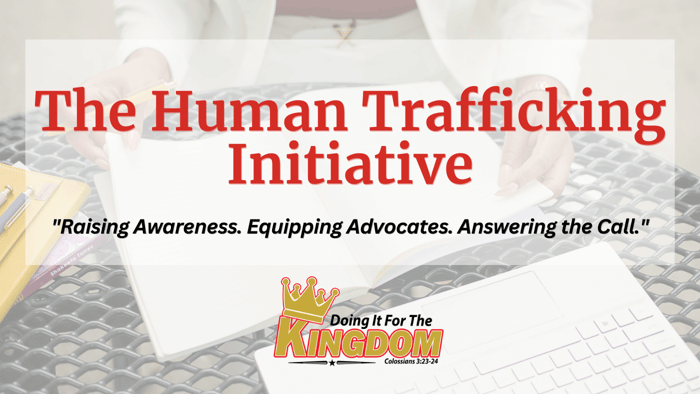Table of Contents
Exposing Sextortion: What It Is, Red Flags, and How to Protect Yourself and Others
 In an increasingly digital world, a new form of online exploitation is targeting both youth and adults at alarming rates. It's called sextortion—a growing crime that combines sexual exploitation and blackmail—and it’s happening more often than you think. Victims are manipulated or coerced into sharing explicit images or videos, which are then used to threaten, shame, or extort them. The emotional and psychological toll of sextortion can be devastating, and in some tragic cases, it has even led to suicide.
In an increasingly digital world, a new form of online exploitation is targeting both youth and adults at alarming rates. It's called sextortion—a growing crime that combines sexual exploitation and blackmail—and it’s happening more often than you think. Victims are manipulated or coerced into sharing explicit images or videos, which are then used to threaten, shame, or extort them. The emotional and psychological toll of sextortion can be devastating, and in some tragic cases, it has even led to suicide.
This blog provides an overview of sextortion, how it works, the red flags to look for, and how individuals, families, and communities can prevent it. You’ll also find trusted resources, real-life examples, and organizations offering tools and education to help you take action.
What Is Sextortion?
Sextortion is a form of sexual exploitation in which someone threatens to distribute your private and sensitive material (usually explicit photos or videos) unless you provide more sexual content, engage in sexual acts, or pay them money. It often starts with a seemingly harmless online conversation that escalates into manipulation and coercion.
This crime can be committed by strangers, peers, romantic partners, or organized criminal groups. Offenders typically use social media platforms, gaming apps, or messaging services to make contact and build trust.
Who Is At Risk?
While anyone can become a victim, certain groups are more vulnerable:
Teenagers and children, especially those with unsupervised internet access
Young adults, particularly those using dating apps
People struggling with loneliness, low self-esteem, or depression
LGBTQ+ individuals, who may be more vulnerable to threats of being “outed.”
Victims of prior abuse or trauma who may have difficulty asserting boundaries
The anonymity and reach of the internet make it easy for predators to manipulate victims without ever meeting them in person.
A Real-Life Case
In 2022, 17-year-old Ryan Last from California took his own life after falling victim to this crime. A criminal posing as a young girl tricked Ryan into sending an explicit photo. Within hours, the scammer demanded money and threatened to release the image to his family and friends. Feeling trapped and ashamed, Ryan paid a portion of what was demanded but was overwhelmed by fear and took his life the same night.
His story, shared by CNN and other major news outlets, prompted a national discussion about how this crime affects teens and how quickly these incidents can escalate. Ryan’s family has since become advocates for stronger protections and open conversations around online safety.
According to the FBI, in just the first half of 2023, more than 7,000 reports of financially motivated sextortion targeting minors were submitted, primarily impacting teenage boys.
(Source: FBI.gov; CNN.com, “California teen died by suicide after sextortion scheme, family says,” 2022)
How Sextortion Typically Happens
It can happen quickly and quietly. Here’s how it usually unfolds:
Contact: The perpetrator sends a friend request or message, often pretending to be someone attractive or relatable.
Grooming: They engage in friendly conversation, build trust, and eventually move the conversation to a private channel.
Extraction: The predator pressures the victim into sharing a revealing photo or video, sometimes pretending to do the same in return.
Threats: Once they have compromising material, the threats begin—demanding money, more explicit content, or sexual favors.
Escalation: If demands aren't met, the predator threatens to send the material to family, friends, school, or social media.
Many victims feel trapped, ashamed, and afraid to tell anyone. That’s exactly what traffickers count on.
Red Flags and Warning Signs
Whether you're a parent, educator, or online user, knowing the signs of sextortion can make all the difference:
A new “online friend” who quickly moves the conversation to private messaging apps

Requests to exchange pictures or videos, especially if they claim it's mutual or harmless
Someone insisting you keep the interaction a secret
Emotional manipulation, flattery, or love-bombing early in the relationship
Sudden withdrawal, anxiety, or mood swings in a child or teen
A person who becomes nervous or evasive about their online activity
Mentions of money, threats, or fears about something being “leaked”
Psychological and Spiritual Impact
The effects of sextortion are deeply traumatic. Victims often experience:
Shame, guilt, and self-blame
Anxiety, depression, and suicidal thoughts
Isolation from friends or family
Loss of trust in others or in technology
For Christian families and communities, this also becomes a spiritual battle. The enemy uses shame and secrecy as powerful tools to keep victims in bondage. But scripture reminds us: "There is therefore now no condemnation for those who are in Christ Jesus" (Romans 8:1). Healing and hope are possible.
What You Can Do: Prevention and Protection
1. Talk Early and Often
Open communication is key. Talk to children and teens about online safety, peer pressure, and God’s value for their identity and body.
Encourage questions and honesty without judgment.
Teach them that it’s never too late to ask for help, even if they’ve made mistakes.
2. Set Digital Boundaries
Use privacy settings and parental controls
Keep computers and devices in shared spaces
Monitor apps, contacts, and usage time
Discourage anonymous interactions
3. Respond with Support, Not Shame
If someone shares they are being sextorted, please be sure to remain calm and reassuring. Let them know:
You believe them
It’s not their fault
Help is available
Avoid shaming language or religious guilt. Instead, guide them with love, wisdom, and practical steps.
4. Report Immediately
If you or someone you know is being targeted:
Contact the National Center for Missing and Exploited Children (NCMEC) at CyberTipline.org
Call the National Human Trafficking Hotline at 1-888-373-7888 or text “HELP” to 233733
Notify local law enforcement and avoid deleting messages or content
Trusted Resources and Organizations
Several leading organizations are working to combat sextortion and support victims:
Thorn offers resources and technology tools to detect and stop online abuse. It also provides youth education tools, like “NoFiltr,” to help teens navigate digital relationships.
NCMEC (National Center for Missing and Exploited Children) – Hosts the CyberTipline and offers prevention tools for families and schools, including NetSmartz, an interactive safety program.
Stop Sextortion Campaign (FBI + NCMEC) – Features awareness videos and survivor stories to help the public recognize and respond to sextortion.
Common Sense Media – Offers age-appropriate digital safety resources and app reviews to help families make informed decisions.
Doing It for the Kingdom – Our nonprofit equips churches, families, and community leaders with biblically grounded resources to fight exploitation, offer hope, and foster healing.
Final Encouragement and a Call to Action
Sextortion thrives in secrecy. But when we speak out, educate ourselves, and protect one another, we expose the darkness and reclaim our digital spaces.
You don’t have to face this alone. If you're a parent, mentor, pastor, educator, or survivor—there is a role for you in this fight.
Join our email list to stay connected with Doing It for the Kingdom!
FAQs
1. What is the difference between sextortion and typical online scams?
Sextortion is a form of sexual exploitation where the perpetrator uses threats to force a person into sending more explicit content, engaging in sexual acts, or paying money. Unlike typical scams that are financially motivated, sextortion often involves emotional manipulation, shame, and ongoing psychological trauma. It is considered both a cybercrime and a form of abuse.
2. Who are the most common targets of sextortion?
While anyone can be targeted, teenagers—particularly boys—are currently among the most affected. Offenders often pose as attractive females to lure young males into sending explicit images. Vulnerable groups such as LGBTQ+ youth, individuals with low self-esteem, or those experiencing mental health challenges are also common targets due to their increased need for affirmation or connection.
3. What should I do if my child has been sextorted?
Stay calm and respond with love, not judgment. Assure your child it’s not their fault and that they’re not alone. Immediately report the incident to the National Center for Missing and Exploited Children at CyberTipline.org, and contact your local law enforcement. Preserve any messages or evidence. You can also seek counseling support to help your child process the trauma.
4. Can sextortion happen to adults too?
Yes, adults are also victims of sextortion—especially those using dating apps or engaging in online relationships. Many adults are lured into sharing intimate content and later blackmailed for money or additional explicit material. Because of shame or fear of reputational damage, many adult victims do not report these crimes, allowing offenders to continue the abuse.
5. How can faith communities help fight sextortion?
Faith communities can play a powerful role in prevention, healing, and advocacy. They can:\n- Provide safe spaces for open conversations about online safety and identity\n- Offer trauma-informed spiritual and emotional support to victims and families\n- Equip leaders and volunteers with education on recognizing the signs of grooming and sextortion- Host workshops, prayer groups, and events focused on digital discipleship and protection\n- Partner with trusted organizations like Doing It for the Kingdom to offer biblically-based resources.


